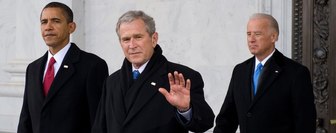If you think that music festivals are a young person’s game, think again.
Older people take the cake when it comes to visiting festivals “regularly” or “occasionally,” according to YouGov Plan and Track research. More individuals between the ages of 30 to 44 said they were regular or occasional festival goers than any other age bracket. People 44 to 65 weren’t far behind, and young people lagged both groups.
In fact, people between the ages of 18 to 29 barely edge out people over 65 in this regard. When the metrics are parsed for frequency, more people from the 65+ set actually say they go to festivals “occasionally” than do 18 to 29 year olds.
Each of these age groups wants something different from a festival it turns out. Festival promoters might do well to pay attention to the needs of the 30 to 44 year old age bracket, because not only do they say they attend festivals with more frequency, but they also plan to spend more money. People 30 to 44 were more likely to say they intended to spend upward of $1000 at a festival in 2019.
The top five 2019 music destinations among the 30 to 44 year old group that said it was going to festivals in 2019 were Coachella (4.5%), Lollapalooza (3.6%), Austin City Limits (3.0%), Burning Man (2.7%) and New Orleans Jazz Fest (2.5%).
This group is serious about the details, too.
They were more likely than other age ranges to say that the festival line up was somewhat important or very important, that including smaller acts was somewhat important or very important, that including new acts was somewhat or very important, that including other entertainment was somewhat important or very important and that the festival’s atmosphere was somewhat important or very important.
So what should festival organizers know about their most frequent, most-willing-to-spend customers? YouGov Plan and Track data offers some insights as to what a 30-44 year old festival goer wants from its vendors.
Food would be a good place to start. This group was more likely than the average American to agree with the statement: “I like to experience new foods and cuisines” (49% to 30% for average Americans).
They also seem more willing to eat out. The 30-44 year old festival goer is more likely to agree with the statement: “I like to experience trendy restaurants and bars” (22% to 11% of average Americans) but they’re less likely to agree with the statement that “eating out is reserved for special moments” than the average American (13% vs. 7%)
But they don’t seem to want just any food. This group was more likely to definitely agree with the statement “I don’t eat junk food, and I don’t let my family” (47% vs. 28%), they’re more to definitely agree with the statement “I am prepared to pay for foods that don’t include artificial additives (23% vs 15%).
But that doesn’t mean they’re after vegetarian and vegan options. This group is more likely to definitely disagree with the statement that restaurants should offer more vegan and vegetarian options (23% vs 15%) and more likely to agree with the statement that “being a vegan is silly” 30% vs. 18%). They’re also more likely than the average American to definitely disagree that quality meat is too expensive (18% vs. 9%).
Festival organizers looking at food options would be wise to offer a range of cuisines with healthy options for the festival goers to nibble on, but don’t go overboard with vegan and vegetarian options.
When it comes to alcohol, spirits are the way to go. The 30-44 year old festival goer is more likely than the average American to definitely agree that they like spirits over beer or wine (30% vs. 13%)
They’re also adventurous, and like to get loose. This group of people was more likely to definitely agree that they like to try new drinks (39% vs. 30%), more likely to definitely agree with the statement “I enjoy going to bars for drinks” (20% vs. 10%), and more likely to agree with the statement “when I drink, I drink to get drunk” (19% vs. 11%).
Their attitudes about quality foods and alcohol, are in line with their feelings about leisure, too.
This group was more likely than the average American to say definitely agree that free time is precious to them (54% vs. 44%), and that time is more important than money (35% vs. 26%).








